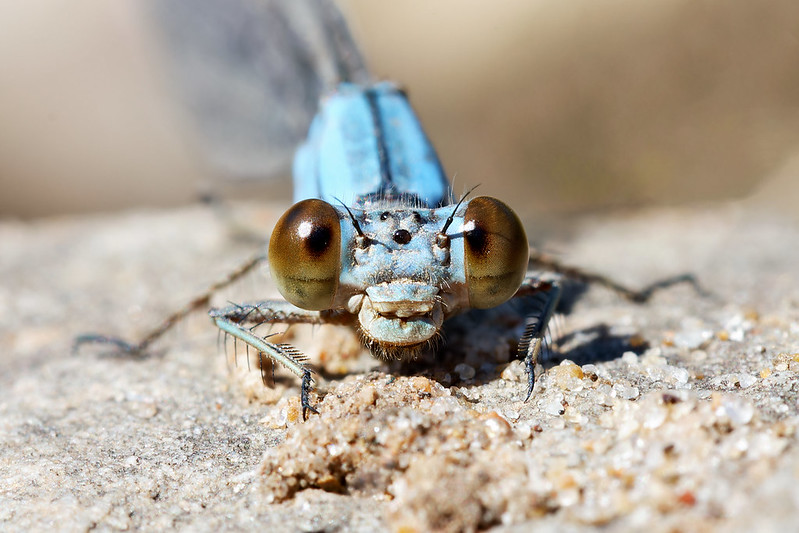I got lucky during one of my walks and spotted a Late October damselfly that was calm enough to let me get right down in the sand with it. This wasn’t a grab-and-go moment with my long lens. I wanted to capture the intricate details, so I switched to my macro setup instead.

Wildlife Notes
The timing of this sighting was the real story. I photographed this damselfly at the end of October, which is late for these insects. By fall, temperatures drop and cold-blooded insects like damselflies slow down. Their metabolism depends on the surrounding temperature, so when it gets chilly, they become sluggish and easier to approach. That’s exactly what happened here. This one moved slowly enough that I could position myself and shoot without spooking it.
Damselflies belong to the order Odonata, which includes both damselflies and dragonflies. Damselflies are usually smaller, have slimmer bodies, and more delicate wings. When resting, they hold their wings together above their body, while dragonflies hold theirs out flat. The large compound eyes on this one are striking and help them hunt small flying insects.
One important detail, damselflies are indicators of healthy aquatic ecosystems. Their nymphs live underwater and can spend months to years there before emerging as adults. Finding one this late in the season suggests the nearby water sources are in good shape.
Photography Notes
I used my Canon EF 100mm f/2.8 Macro for this shoot. That lens gave me the working distance and magnification I needed to capture the fine texture of the exoskeleton and those detailed compound eyes. Getting down at sand level was key—shooting from above would have flattened the perspective and lost the intimacy of the shot.
The f/11 aperture was a solid choice. At macro distances, depth of field is razor-thin, so stopping down helped keep both eyes sharp. The 1/125 second shutter speed is borderline for handheld macro, but since the damselfly was still from the cold, it worked fine. Normally, I aim for 1/200 or faster to reduce any motion blur. ISO 400 kept noise low while maintaining the necessary sensitivity for the light conditions.
The sandy foreground and blurred background add nice separation and direct attention to the damselfly. The lighting appears soft and even, likely from natural shade or thin cloud cover—ideal for bringing out color and detail without harsh shadows.
Camera Gear
- Camera: Canon EOS 40D
- Lens: Canon EF 100mm f/2.8 Macro
Camera Settings
- Focal Length: 100mm
- Aperture: f/11
- Shutter Speed: 1/125 second
- ISO: 400
- Exposure Compensation: 0
